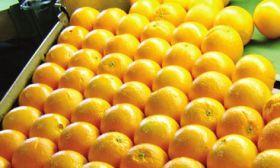
Australian citrus exports have hit their highest point in almost a decade, with the industry breathing a sigh of relief after some tough years in the business.
A surge in both the export volume, to a total of 133,373 tonnes, and the pricing, averaging A$1.06 (US$0.95) per kg, was behind the excellent performance this season, with China, Hong Kong and Japan the standout markets.
“We previously thought Japan, which has been our biggest market for some time, had hit capacity,” Andrew Harty, general manager for market development at Citrus Australia told Asiafruit. “But navel orange exports there have really grown, largely due to investments in high brix programmes to guarantee the sweetness of produce.”
Japanese consumers are prepared to pay a premium for a certain eating experience. “With some supermarkets in Japan, the brix-tested produce is all they will stock,” added Harty.
China and Hong Kong have also seen phenomenal growth for exports of both navel oranges and Honey Murcott mandarins, rising to become a market nearly equal to Japan. This is particularly rewarding for the industry, given the effort put in by growers and exporters to meet China’s tougher import protocols.
“We’ve been doing a lot of trade development work in China, building relationships and ensuring they receive top quality produce,” said Harty. “We want this to be a long-term relationship for the industry, not a flash in the pan.”
Export business to China is particularly profitable for citrus exporters, with the average price per kg at A$1.42 (US$1.27). Understandably, the industry is keen to further its penetration of the market.
“At the moment, we’re established in major coastal cities,” said Harty. “We want to move to target tier-two cities. This is where the future of the industry is headed.”
Australian trade representatives have pushed Australian citrus’ taste, aesthetic appeal, health properties and safety in expanding business in China. “‘Sweet, safe and healthy’ is the promotional line we use at trade fairs and on our promotional material,” said Harty.
Prices shift upwards
The surge in prices for Australian produce has primarily been caused by the shifting exchange rate, with the Australia dollar dropping below parity for the season. “The drop in exchange rate was vital for us,” said Harty. “For approximately every five cents our dollar drops against the US, growers will get around A$1 extra in revenue per carton. So the drop in the Australian dollar has meant a huge rise in farm gate returns.”
The drop could not be more welcome for the industry, which endured particularly tough times since the 2010 season with both a heatwave and a rising Australian dollar. “It was a frustrating time for the industry, as they have no control over either,” said Harty. “Grower costs and risks are high, but now the rewards are actually there. It would be ideal if our dollar dips even further before the next citrus season.”
Looking to the future for the industry, Harty acknowledges the efforts of the Australian government in pushing for free trade agreements (FTAs) with Asian governments. “South Korea will be a huge boost for us,” he said. “We currently have a 50 per cent tariff on oranges, but this will drop to zero in a few years. We expect the FTA with Japan to be completed soon and of course the effort in China is still ongoing. This will all help.”
There is also strong praise for researchers and pioneering industry members who invested in technology such as improving packing sheds and brix-testing equipment, which Harty believes have been pivotal in strengthening the industry. “Better post-harvest facilities mean a better finished product, reduced overheads through labour saving and improved efficiency. Packing can be as expensive as growing, so cutting costs and ensuring the industry is a little more competitive is a great thing.”
While Australia can never fully compete on price, the industry is keen not to price itself out of the market. The average cost of lower quality oranges in Asia, according to Harty, is around $22 per carton. “We need to keep ours at $28 per carton,” he said. “Any higher and it may struggle. Only our high quality reputation can achieve that ongoing premium.”
Research at the fore
As the major contribution made by investments in research and technology is recognised, Horticulture Australia (HAL) has established a new reference group to advise on research and development (R&D) project proposals presented to the Industry Advisory Committee, the body responsible for recommending investments for the citrus industry to HAL.
Brad Wells, HAL project manager and member of the newly established group, says that the extra support will help evaluate R&D proposals submitted, which he said totalled between 20 and 30 annually.
“Independent specialist knowledge is required to assess the scientific rigour of the project proposals and provide technical advice to the IAC and subsequently HAL on the most appropriate R&D investments for the citrus industry,” he added.
The reference group, which meets for the first time in February, includes entomologist Dr Phil Taylor, independent consultant Dr Ron Hutton, citrus researcher Shane Hetherington and Harty.






No comments yet